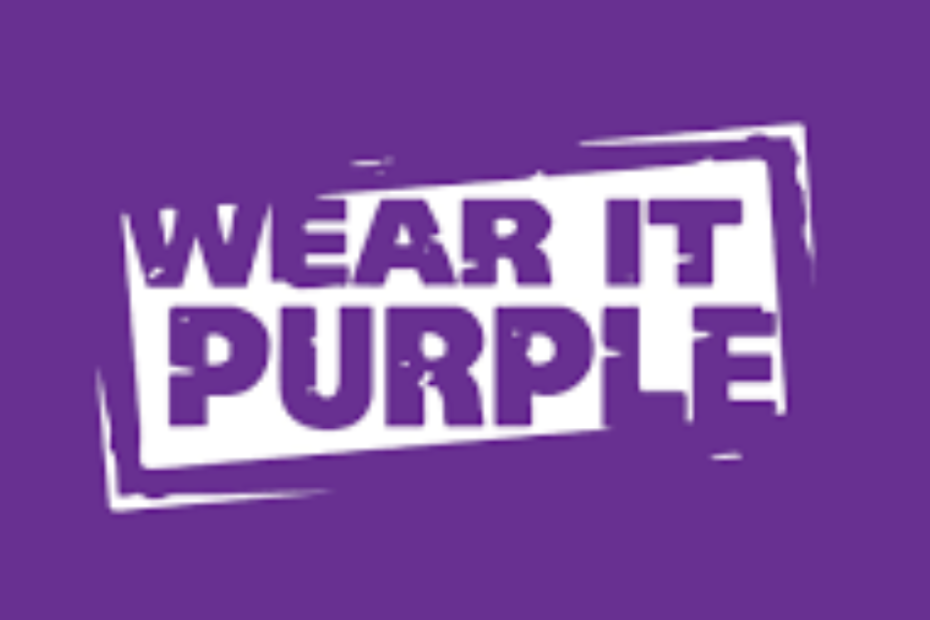Wear it Purple was founded in 2010 in response to global stories of real teenagers, real heartache and their very real responses. In 2010, several LGBTIQ+ young people in the USA took their own lives following bullying and harassment resulting from the lack of acceptance of their sexuality or gender identity.
One member of this group was 18 year old Tyler Clementi who took his own life after being publicly ‘outed’ as gay by his roommate, prompting a frenzy as reports poured in of various young people sadly in the same situation.
As the world saw the faces of precious young lives lost, some young people found a new sense of conviction and purpose to ensure that young people everywhere would know that there were people who did support and love them. Wear it Purple was established to show young people across the globe that there was hope, that there were people who did support and accept them, and that they have a God-given dignity that nobody can take from them.
Since 2010, when Wear it Purple was co-founded by Katherine Hudson and Scott Williams, Wear it Purple has developed into an international movement. New generations of LGBTQI+ young people continue to be dedicated to promoting the annual expression of support and acceptance to rainbow young people.
What started out small has now grown; however the message remains the same. Everybody has the right to be loved and accepted for who they are.
For many in the community who identify as lesbian, gay, bisexual, transgender, intersex or queer (LGBTIQ+), life can be difficult. Being accepted for who they are is a struggle for many. A survey of LGBTIQ+ high school students in Australia indicates that many face homophobic abuse, bullying and even violence. The Australian Human Rights Commission surveyed 1500 LGBTIQA+ Australians and found that over 70% had experienced abuse, bullying and harassment. It also found that two-thirds of LGBTIQA people do not reveal their sexual orientation to their work colleagues. LGBTIQA+ people have much higher rates of attempted suicide than the general population. For example, the rate of attempted suicide for transgender people between the ages of 14 and 25 is 15 times the rate in the general population.
The Office for Justice, Ecology and Peace has spoken to many people from the LGBTIQ+ community and they all reported experiences of bullying, abuse and discrimination at school and in the community. One spoke of his experiences at a Catholic school and now:
“There have been years and years of horrifying stories of bullying at school. I didn’t come out to family and friends straight away. I stayed quiet except with a few teachers at school. I confided in our RE Coordinator who was the most loving and accepting person.”
Another gay man we spoke with was personally aware of the depression that many LGBTIQ+ people face:
“I had two close gay friends who, sadly, took their lives because of the stigma and fear caused by the homophobia they experienced. It is very hard to take.”
While not rejecting the Church’s traditional teaching, Pope Francis, through his own public comments and actions, has encouraged us to reach out to members of the LGBTIQA+ community in friendship and without judgment. Early on in his pontificate, he responded to a journalist’s question about a gay priest by saying “Who am I to Judge?”
In more recent times, the Holy Father has befriended a number of trans women who are sex workers in Torvaianica. One of the trans women, a Colombian named Andrea, said:
“Before, the Church was closed to us. They didn’t see us as normal people, they saw us as the devil. Then Pope Francis arrived, and the doors of the Church were opened to us.”
Jesus was rebuked by the Pharisees for dining with those who were judged harshly and condemned such as tax collectors and sex workers, but he rejected these criticisms (Cf. Matthew 9:10-17, Mark 2:15-22, and Luke 5:29-39). We are called to follow in his footsteps, to reach out with friendship and love to those whom others in society criticise and reject.
Wear It Purple Day is 30 August. Why not wear something purple on the day? Take the opportunity to explain to others why you are doing it. Let God’s love shine in the lives of everyone who experiences fear and rejection including young LGBTQI+ people!
